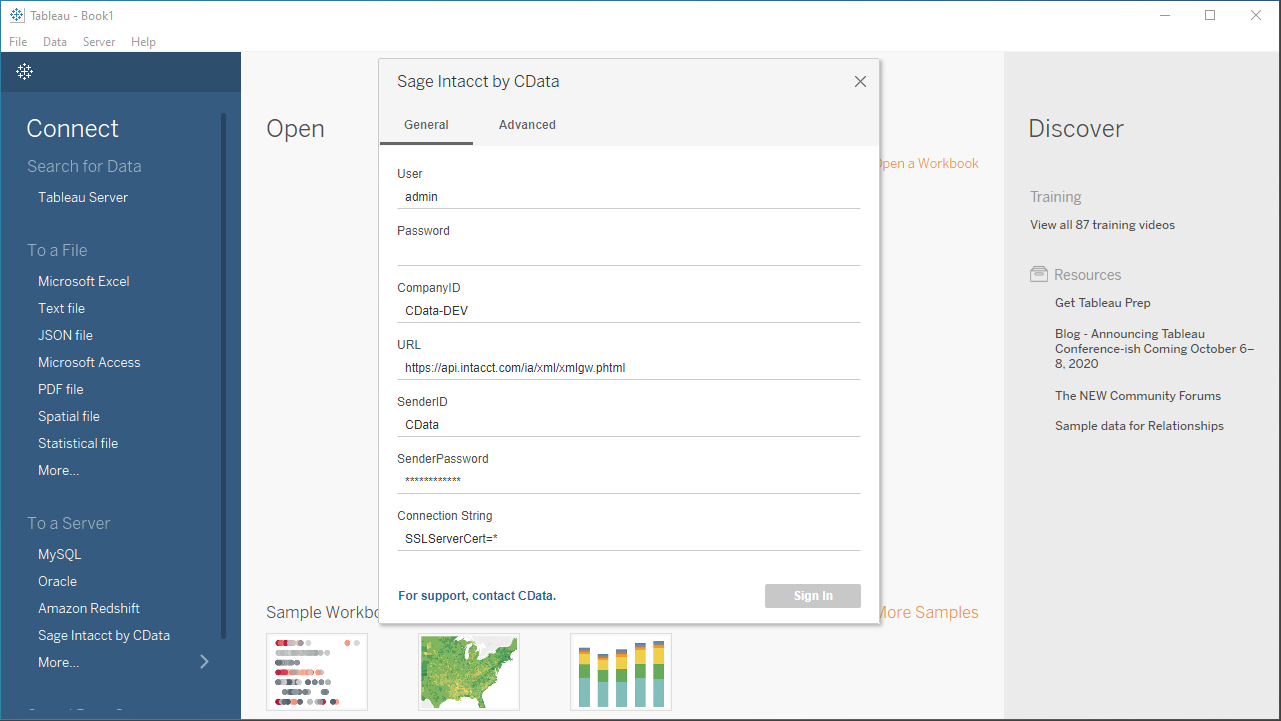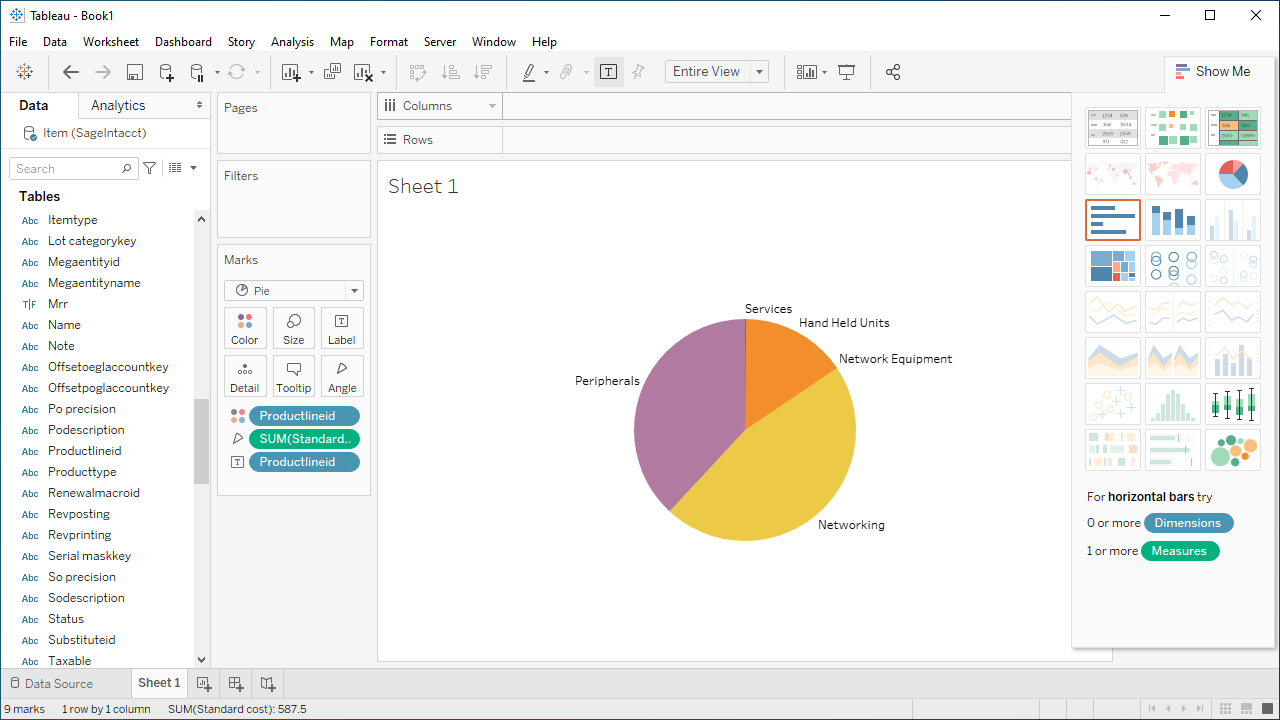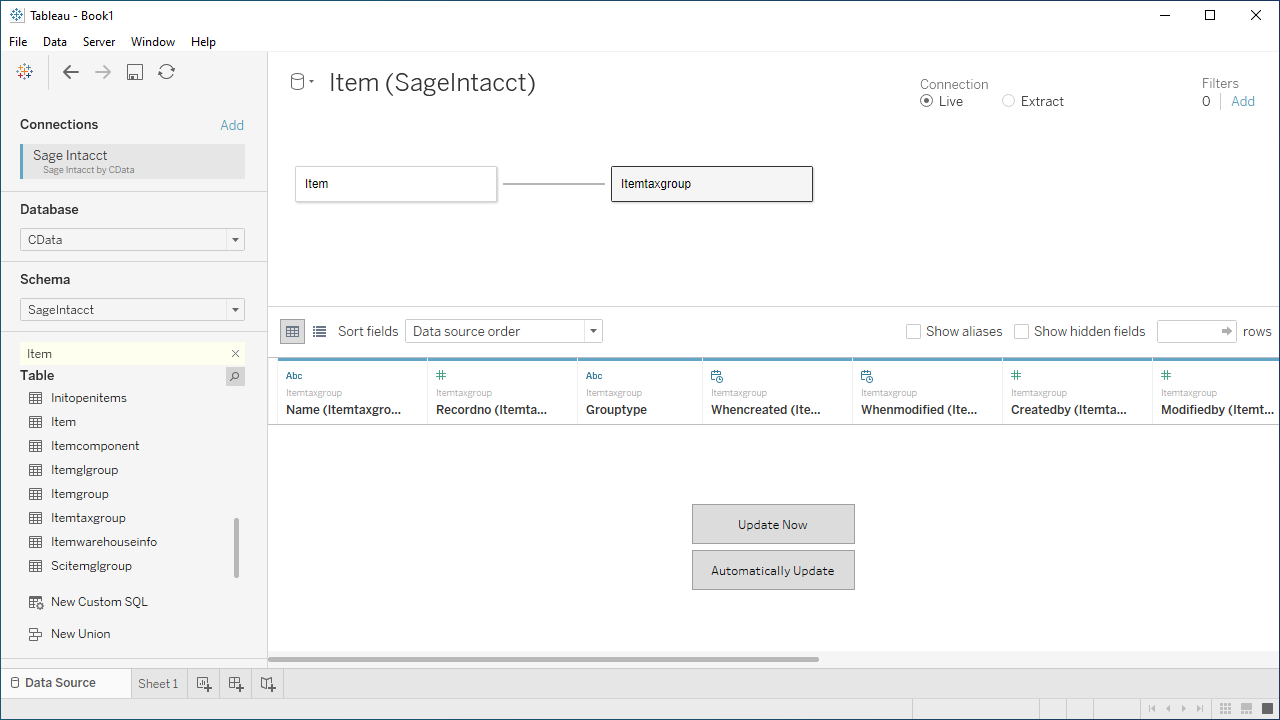Discover how a bimodal integration strategy can address the major data management challenges facing your organization today.
Get the Report →Visualize Live LDAP Objects in Tableau
Use CData Tableau Connectors and Tableau Desktop to visualize live LDAP objects.
Tableau is a visual analytics platform transforming the way businesses use data to solve problems. When paired with the CData Tableau Connector for LDAP, you can easily get access to live LDAP objects within Tableau. This article shows how to connect to LDAP in Tableau and build a simple chart.
The CData Tableau Connectors enable high-speed access to live LDAP objects in Tableau. Once you install the connector, you simply authenticate with LDAP and you can immediately start building responsive, dynamic visualizations and dashboards. By surfacing LDAP objects using native Tableau data types and handling complex filters, aggregations, & other operations automatically, CData Tableau Connectors grant seamless access to LDAP objects.
NOTE: The CData Tableau Connectors require Tableau 2020.3 or higher. If you are using an older version of Tableau, you will need to use the CData Tableau Connector for LDAP. If you wish to connect to LDAP objects in Tableau Cloud, you will need to use CData Connect.
Connect to LDAP in Tableau
Open Tableau and click More under Connect -> To a Server. Select "LDAP by CData," then configure the connection and click "Sign In."
To establish a connection, the following properties under the Authentication section must be provided:
- Valid User and Password credentials (e.g., Domain\BobF or cn=Bob F,ou=Employees,dc=Domain).
- Server information, including the IP or host name of the Server, as well as the Port.
BaseDN: This will limit the scope of LDAP searches to the height of the distinguished name provided.
Note: Specifying a narrow BaseDN may greatly increase performance; for example, cn=users,dc=domain will only return results contained within cn=users and its children.

Discover Schemas and Query Data
- Select CData from the Database pull-down menu.
- Select LDAP from the Schema pull-down menu.
- Drag the tables and views you wish to visualize onto the join area. You can include multiple tables.
![Selecting table(s)]()
- Select Update Now or Automatically Update. Update Now lets you preview the first 10,000 rows of the data source (or enter the number of rows you want to see in the Rows text box). Automatically Update automatically reflects the changes in the preview area.
- Click the tab for your worksheet. Columns are listed as Dimensions and Measures, depending on the data type. The CData Tableau Connector discovers data types automatically, allowing you to leverage the powerful data processing and visualization features of Tableau.
- Drag a field from the Dimensions or Measures area to Rows or Columns. Tableau creates column or row headers.
- Select one of the chart types from the Show Me tab. Tableau displays the chart type that you selected.

Using the CData Tableau Connector for LDAP with Tableau, you can easily create robust visualizations and reports on LDAP objects. Download a free, 30-day trial and get started today.







